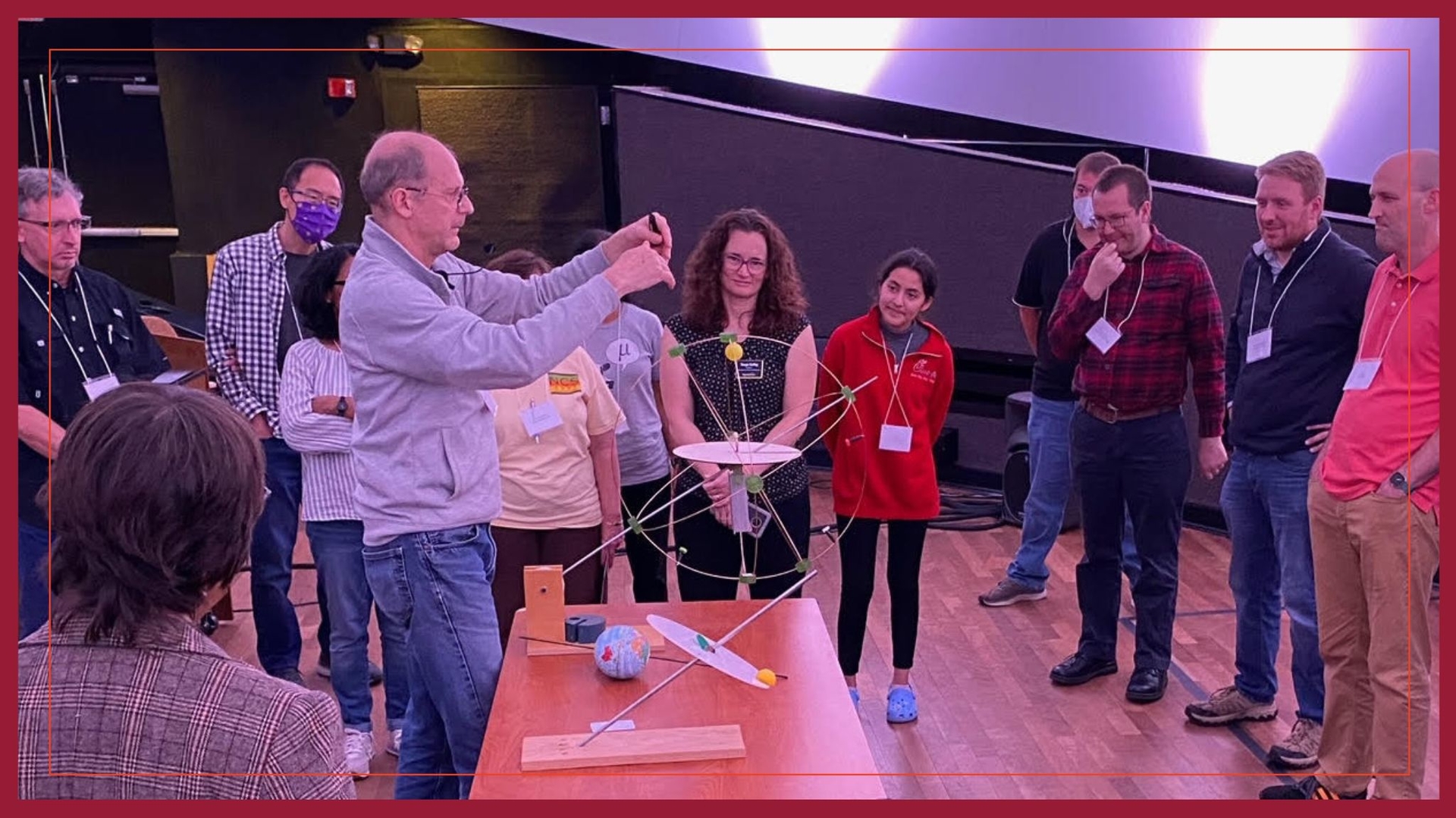
Guilford College hosted the fall conference of the the N.C. Section of the American Association of Physics Teachers. More than 40 Physics teachers and students from across North Carolina and other states participated in the Nov. 4-5 event.
Caption: High Point Physics Professor Jeff Regester demonstrates an apparatus to help students understand how the tilt of the Earth determines the relationship between one’s horizon and how objects like the Sun move across the sky.
Raymond Binford Professor of Physics Don Smith organized the conference and collaborated with Thomas Hefner of UNC Greensboro's Middle School to develop the program.
The North Carolina section of the American Association of Physics Teachers meets twice a year at participating institutions. The November meeting was the first time Guilford has hosted the event in more than 25 years. Attendees expressed appreciation for the beautiful campus, the supportive facilities, and particularly the excellent food.
Two plenary speakers started off the meeting: Tonya Coffey, Appalachian State University’s Director of the Physics Secondary Education Program, told the audience about nationwide efforts to inspire more Physics students to consider teaching as a career. Rebecca Vieyra, who was awarded the 2013 Presidential Award for Excellence in Math and Science Teaching and served with NASA as the Albert Einstein Fellow in 2014, shared recent developments from the Bootstrap project, an effort to increase the incorporation of computational thinking and modeling skills in the teaching of Physics to younger students.
Speakers at the conference shared their thoughts on a variety of topics. Davidson College Physics Professor Emeritus Wolfgang Christian applied iterative physics models to economic systems in an attempt to understand the foundations of wealth inequality.
Virginia Tech Physics Professor Tatsu Takeuchi explained how the common uses of "action" and "reaction" in English lead students to misunderstand the famous phrasing of Newton's Third Law ("for every action there is an equal and opposite reaction"), and he suggested techniques to combat this confusion.
Jeff Regester, Instructor of Physics and Astronomy at High Point University, demonstrated a homemade apparatus that helps students relate their position on Earth to the rotation of the sky, allowing them to understand how the tilt of the Earth causes the sun to be higher in the sky in summer, while low on the horizon in winter.
Rebecca led two workshops that gave attendees an opportunity to practice using a smartphone app to design science experiments using the phone's various sensors. Phones have become walking laboratories, with the means to measure light intensity, distance, sound levels, gravity, acceleration, and even the local magnetic field. The second workshop explored the diverse interactive simulations provided by the University of Colorado's "PhET" team.
Guilford faculty demonstrated the beauty of a full-dome planetarium show on the 50-foot diameter ceiling of Bryan Jr. Auditorium and invited participants to join in stargazing with the telescopes of the J. Donald Cline '78 rooftop observatory. Although clouds made viewing a challenge, Isaac Cunningham '26 and Erin Goeke '24 joined Don in helping attendees find Jupiter and Saturn through the gaps in the clouds.
Four high school students from the N.C. School of Science and Mathematics presented posters on their research in topics ranging from Exoplanets to Quantum Mechanics. Other colleagues participated in a "share-a-thon," a kind of flea market for equipment, toys and pedagogical inspiration.
Participants enjoyed seeing each other again after two years of virtual meetings. Beginning teachers such as Guilford Alumnus Connor Potts '20 (now teaching physics at Smith High School in Greensboro) connected with experienced teachers, and groundwork was laid for further collaboration of teachers in Greensboro. Ideas and inspiration were shared between students, high school teachers, and professors, and everyone left energized about their work to help students understand the universe better through the tools of Physics teaching.

